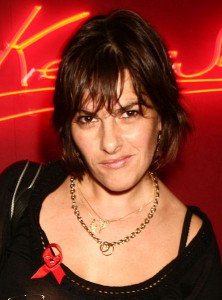
In her much-talked about retrospective, the first piece of art is not by Tracey Emin. Nor does it seem much like a work of art. Despite the frame, it is clearly also a letter from her father.
Halfway through the show is another work in which the art is hard to discern. This is a video piece called Conversation with my Mum (2000). It does what it says on the tin.
It’s been noted elsewhere that Emin is the subject of Emin’s show. Most surely know by now most of her biography. And that biog is the message, however impressive the range of media here.
There could be something in the water near Margate. Despite differences and the accusations of copying, the outputs of Emin and onetime lover Billy Childish appear to run parallel.
First there is the confessionalism, an impulse you surely either have or you don’t. It cannot all be learned behaviour. Then there is the gesamtkunstwerk of painting, drawing, writing, film, etc.
But the reason Emin is now the bigger player in the art world is not just because she moved into the conceptual arena but, equally, because she wears the former tendency better as a female artist.
Personal statements and feminist art have gone together since (at least) the 1970s, when Mary Kelly made her landmark work about pregnancy and the early years of motherhood.
Of course, we now have some real artists of autobiography, the non-conceptual celebrities who spin out their life stories in regular installments to an eager audience. It’s a thin line.
You may point out that Emin can draw and has read some philosophy. The Exhibition Guide says so. But what a strange and interesting show this would be if she couldn’t or hadn’t.
Love is What You Want is at Hayward Gallery, London, until 29 August 2011. I got the above image from Wikipedia Commons licence as photography was not permitted. But it seems to fit.
Personal statements and women’s art (not just feminist art) have gone together for a long time now, but this can be a weakness as much as a strength. Mostly the link between biography and artwork has been done by others, rather than the artist herself.
Emin is different because she chose herself as the subject of her ouevre. In history it can be reductive to look at women’s biographies as a basis for their artwork, rather than looking at the artwork in its own right (either in its formal composition, its social/ political context, or its place in art history).
It’s a tricky balance to strike, but I don’t think that because someone is a female artist it means that they are better placed to create personal or confessional art. Male artists have personal histories too!
You’re right about the thin line. But then, the artists that create work on the borders are often the most interesting -not because of their gender or their personal history, but because of what they’re doing!
Thanks for posting this article – it’s an interesting debate.
Thanks for such a considered response.
I might have added that where there is a gendered tradition of making more personal work, that work in fact becomes less personal and comes to seem more aware. Though of course there is no reason why a male artist cannot respond to that strand of art history or react to any sense that his own work has to be more detached.
Biography can be reductive. Perhaps that’s an issue Tracey Emin is addressing. But I also think for both male and female artists biography is context and context brings meaning to the work.
Yes, the thin line does make things interesting. You even get the feeling this artist is crossing it time and again. And the results are very engaging, as can be seen from the crowds at the show and the reams of press etc.